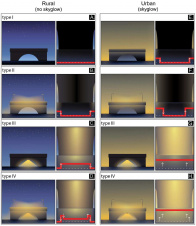Paper: Light pollution from illuminated bridges as a potential barrier for migrating fish
RIBES Early Stage Researcher James Campbell, together with RIBES supervisor Franz Holker, from IGB Berlin, recently published a paper on how an illuminated bridge can create a light barrier when it embodies unnatural light variations with increased and decreased light levels. The paper was led by Catherine Pérez Vega from the same institution.
 In the abstract, they write: "Illuminated bridges have become important assets to navigable aquatic systems. However, if artificial light at night (ALAN) from illuminated bridges reaches aquatic habitats, such as rivers, it can threaten the river's natural heterogeneity and alter the behavioural responses of migratory fish. Here, via a pilot study, we quantified levels of ALAN at illuminated bridges that cross a river and, propose a conceptual model to estimate its potential implications on two migrating fish species with contrasting life histories. Night-time light measurements on the river Spree in Berlin were performed continuously along a transect and in detail at seven illuminated bridges. Photometric data of the pilot study showed rapidly increased and decreased light levels at several illuminated bridges from which we derived several model illumination scenarios. These illumination scenarios and their potential effect on migrating Atlantic salmon smolts (Salmo salar) and European silver eel (Anguilla anguilla) are presented as a conceptual model, considering illuminated bridges as behavioural barriers to fish migration. ALAN's adverse effects on freshwater habitats must be better researched, understood, managed, and properly communicated to develop future sustainable lighting practices and policies that preserve riverscapes and their biodiversity."
In the abstract, they write: "Illuminated bridges have become important assets to navigable aquatic systems. However, if artificial light at night (ALAN) from illuminated bridges reaches aquatic habitats, such as rivers, it can threaten the river's natural heterogeneity and alter the behavioural responses of migratory fish. Here, via a pilot study, we quantified levels of ALAN at illuminated bridges that cross a river and, propose a conceptual model to estimate its potential implications on two migrating fish species with contrasting life histories. Night-time light measurements on the river Spree in Berlin were performed continuously along a transect and in detail at seven illuminated bridges. Photometric data of the pilot study showed rapidly increased and decreased light levels at several illuminated bridges from which we derived several model illumination scenarios. These illumination scenarios and their potential effect on migrating Atlantic salmon smolts (Salmo salar) and European silver eel (Anguilla anguilla) are presented as a conceptual model, considering illuminated bridges as behavioural barriers to fish migration. ALAN's adverse effects on freshwater habitats must be better researched, understood, managed, and properly communicated to develop future sustainable lighting practices and policies that preserve riverscapes and their biodiversity."
